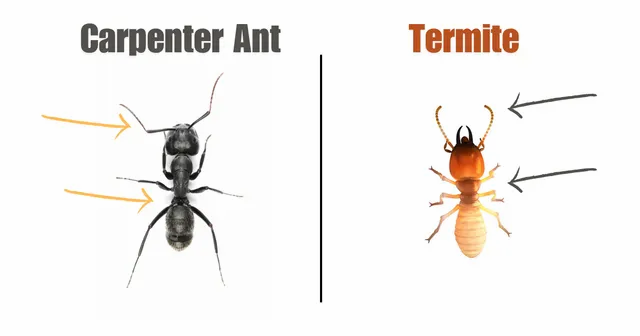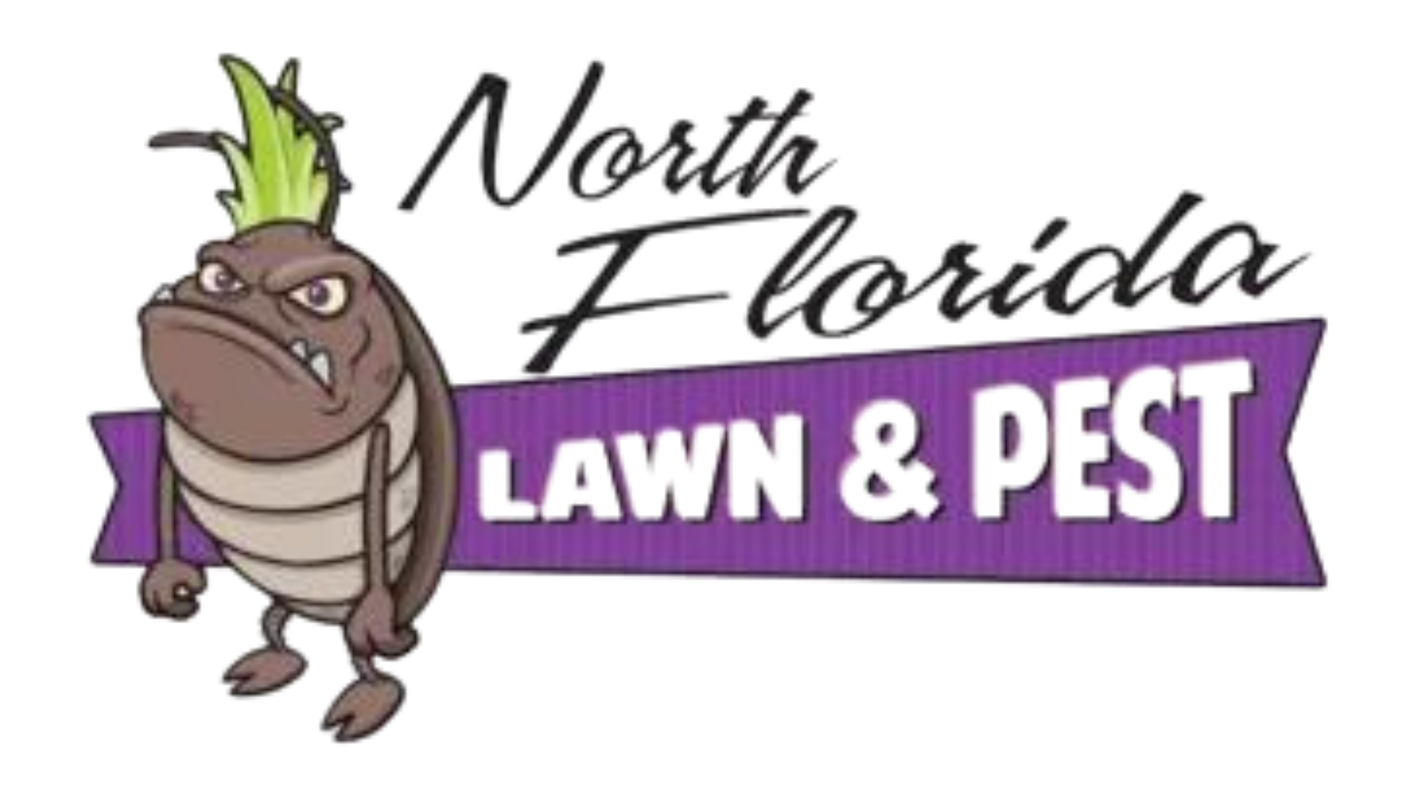Carpenter Ants vs Termites:
Key Differences You Should Know
Key Things To Know About Carpenter Ants & Termites
Trying to figure out the difference between carpenter ants and termites? It’s easy to see why people confuse the two, but knowing how to tell them apart is important—especially when you’re dealing with an infestation. These pests may share some traits, but they vary greatly in their appearance, behavior, and how you’ll need to tackle the problem. If you’re uncertain, reaching out to a pest control expert is the best way to prevent further damage to your property. Let’s break down the main differences so you can get a better understanding.
How They Look: Size, Shape, and Color
While both carpenter ants and termites have six legs, they have plenty of other physical features that make them easy to tell apart.
Here are some key distinctions to look out for:

- Body Shape and Size: Carpenter ants have a noticeable, narrow waist that separates their upper and lower body segments, making their three-part bodies look clearly divided. Termites, on the other hand, have a more uniform, cylindrical body with just two main segments, lacking the “pinched” waist of ants.
- Antennae: One of the easiest ways to spot the difference is in their antennae. Carpenter ants have elbowed antennae that bend outward from their heads before angling forward. Termites, however, have straight, bead-like antennae that point down toward the ground with no angles.
- Wings (if present): If you’re dealing with winged varieties, carpenter ants have two different-sized wings on each side, with the front pair being larger than the hind pair. Termites have wings of equal size on each side, giving them a more uniform appearance when flying.
- Color Differences: Carpenter ants are usually black, brown, or occasionally red, depending on the species. Termites tend to have pale, almost translucent bodies, with some appearing milky white or light brown. The color can vary depending on the termite's role in the colony.
Although carpenter ants and termites share some similarities, their body shape, antennae, wings, and coloration offer distinct clues for identifying them. If you’re ever unsure which pest you’re dealing with, it’s best to contact local
pest management services to prevent serious damage to your home.
Behavioral Differences Between Carpenter Ants and Termites
A key distinction between carpenter ants and termites lies in how they interact with wood. While both insects are often found around wooden structures, their behavior toward wood is quite different, which leads to different types of damage.
Termites: Wood Eaters
Termites actually consume the wood they live in, which is why they’re often considered a more severe problem than carpenter ants. As termites chew through support beams and other wooden structures, they can cause significant structural damage over time. In fact, if you notice floors sagging or ceilings buckling, but there are no obvious signs of water damage, termites could be the culprit. They eat the wood from the inside out, which often goes unnoticed until serious damage has occurred, making them especially dangerous to homes.
Carpenter Ants: Wood Nesters
Carpenter ants, on the other hand, don’t eat the wood—they simply burrow into it to create nests. While this can still result in some structural damage, it’s usually far less severe than what termites cause. Carpenter ants are more attracted to human food, which is why you might spot them foraging around your kitchen or pantry at night. The wood is simply a place for them to create a safe home, rather than a food source.
Locating Carpenter Ants vs. Termites
When it comes to detection, carpenter ants are often easier to find. Since they venture out in search of food, you’re more likely to see them traveling away from their nests. A telltale sign of carpenter ants is the presence of frass—small piles of wood shavings and excrement left behind as they burrow through the wood.
Termites, however, are much more discreet. They rarely leave their nests, and since they consume wood from within, they can remain undetected for long periods. Their quiet nature, paired with their voracious appetite for wood, makes termites a bigger threat to your home’s structural integrity, which is why swift action is crucial if you suspect an infestation.

Infestation Differences Between Carpenter Ants and Termites
How can you tell if you have an infestation of carpenter ants or termites? There are a few clear signs that can help you distinguish between the two. However, if you’re uncertain, it’s always wise to consult with a professional pest control expert. Both pests can cause serious problems if left untreated, and you don’t want their colonies to grow unchecked inside your home.
Signs of Carpenter Ant Infestations
One of the most obvious signs of carpenter ants is the presence of frass—small piles of wood shavings that look like sawdust. Carpenter ants create these shavings as they burrow into wood to expand their nests. You’ll often find frass near their entry points or around the wood they’ve been nesting in.
Carpenter ants also leave behind visible holes in wood as they tunnel through, creating intricate networks of chambers. Though they don’t eat the wood, their burrowing can still cause damage, especially if the infestation is large.
Signs of Termite Infestations
Termites, unlike carpenter ants, consume wood, so you won’t see any wood shavings around a termite nest. Instead, termites leave behind other signs, like mud tunnels. These hardened mud corridors are built by termites to travel between their underground colonies and food sources (your home’s wood). You can often spot these tunnels on the exterior of your home’s foundation, especially if termites are actively looking for new food sources.
Termites also leave behind more significant wood damage. Because they actually eat the wood, you’ll find that termite-damaged wood appears hollowed out, often with a honeycomb pattern inside. Floors or beams that feel weak or soft to the touch could indicate a termite infestation.
Why You Shouldn’t Delay Treatment
When it comes to handling termites and carpenter ants, the best approach is always to contact a professional pest control service. Termites can cause major damage to the structure of your home if left unchecked, and their presence can significantly delay any remodeling or construction projects, earning them the nickname “schedule killers” in the industry. The longer you wait to deal with termites, the more damage they can do.
Carpenter ants, while generally less destructive, can still create problems if left alone. As their colony grows, they can damage wood structures and even introduce health risks to your household. It’s always better to address the problem early before it becomes more serious.
If you’re dealing with an infestation in Jacksonville Beach, contact
Jacksonville Beach Pest Control By NFLP today. We can help eliminate these pests and ensure your home stays safe. Don’t forget to check out our FAQ guide for more detailed information about common household pests.
Copyright © 2024 - Jacksonville Beach Pest Control by NFLP All Rights Reserved

